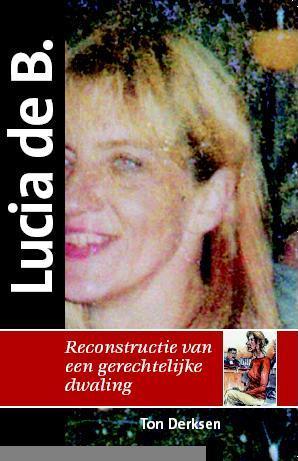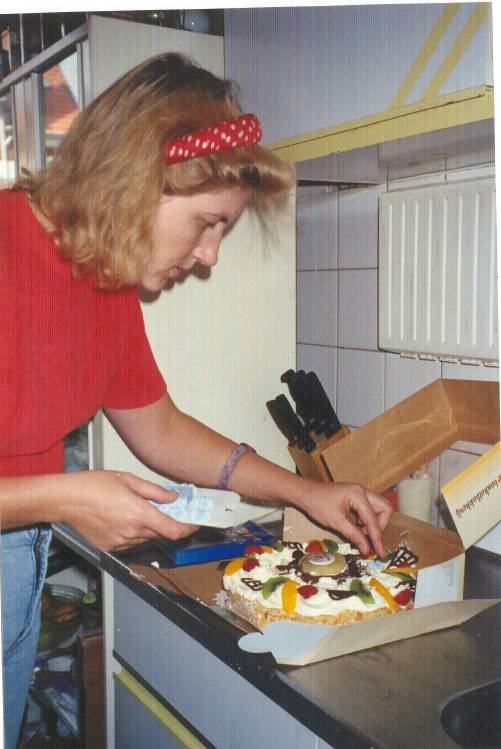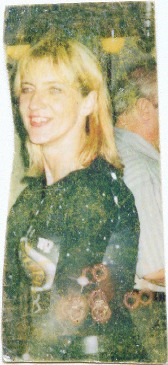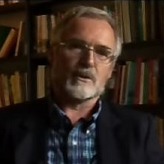The BOOK by TON DERKSEN
“Reconstruction of a miscarriage of justice”

Ton Derksen –
Lucia de B. Reconstruction of a miscarriage of justice [Dutch]
Paperback, 308 pages
ISBN 9085710480
€ 24,95
A
Veen Magazines publication
- English translation of Chapter 3, “The Death of Baby Amber” [pdf]
- English synopisis of whole book (24 pages) The Fabrication of Facts: the Lure of the Incredible Coincidence [pdf]
# CONTENTS
- Preface
- The structure of the court's plea

- Nine points of conviction
- Fatal thought instincts
- The first locomotive can't pull it
- The second locomotive can't pull either
- The Coincidence Plea
- The Compulsion Plea
- Some experts are more equal than others
- The prejudice of the court
- Thema I: Lucia's so called deliberately flawed statements
- Thema II: not including certain incidents in the statements
- Thema III: Lucia's "apparent deceitfulness"
- Thema IV: a different world: doctors and nurses
- Thema V: "A recognisable pattern"
- The eight other suspected murders and attempted murders
- Convinced without plea
- Epilogue by Professor dr. Hans F.M. Crombag
Copyright © 2006 | All Rights Reserved
# SUMMARY
Lucia de B. The reconstruction of a miscarriage of justice
by Ton Derksen, Veen Magazines, 2006
The case of Lucia de B. is unique – The public prosecutor is not the bad guy but the court of justice itself. After the closing speeches the public prosecutor's lawyers were expecting an acquittal. The court also saw that there was insufficient evidence. In it's apparent need for a conviction the court began reconstructing. It picked out two cases that should have acted as locomotives to pull the other notoriously weak cases into the station of ‘declared-proven’. The court hereby very actively manipulated the facts, it used all kinds of rhetorical strategies and poured a scientific sauce over the whole thing.
The scientific precision incidentally turns itself against the court. The scientifically so beautifully and precisely argued time of Amber's murder appears to deliver a clear, convincing conviction. But two doctors were examining Amber at the time of the reputed murder. And the scientific argument that was supposed to show that – in January 2001 – Lucia poisoned Ahmad displays not an injection of Chloraly Hydrate, but an excess of prescribed medicine.
The two locomotives can't pull any carriages, they can't even leave the station ‘pure suggestion’. The equally scientifically determined moment of the, so called, murder of Ahmad shows at the same time that it is impossible for Lucia to be the culprit, because she'd already left the hospital some twenty minutes previously.
The crucial case of Mrs. Zonneveld, which was supposed to demonstrate that Lucia's compulsion was a compulsion to murder, was also a fiasco for the court. In order, legally and convincingly, to prove that Mrs. Zonneveld died an unnatural death the court had to construct evidence based on a letter and a statement from the doctor concerned who, seven years previously, had verified it was a natural death.
When it became apparent that the evidence wouldn't be forthcoming this doctor wrote a letter to the court stating that the death of Mrs. Zonneveld on that particular afternoon had not been expected. Opposite this surprising letter are the opinions of all the experts and the simple fact that the very old lady was very seriously ill. And doctors and nurses from care homes know that you can't predict the death of seriously ill old people to within the hour.
In this book we don't just look at how the court manipulated the facts, maltreats the argumentation and dresses-up pure suggestion as insinuation. We look at how it was possible that, from the outset, almost everyone was sure that Lucia was the culprit. Given the certainty that a serial killer was on the loose, there had to be a conviction. How can appearances have conspired against Lucia in this way?
# Chapter 1
discusses nine “points of conviction” which blinded more or less everybody from the beginning. It concerns, initially here, four instincts of intellect that guide our way of thinking and lead us in Lucia's case to the conclusion that she must have done something:
- “Where there's smoke, there's fire” (the Juliana Children's Hospital and their ten reports and the court's ten convictions can't be that far wrong),
- “A coincidence like that can't be by chance!” (all the incidents while Lucia was on duty, that's too much of a coincidence, she must have done it),
- The anchor effect (the officially calculated minimal chance that she didn't do it – 1 in 342,000,000 – keeps circulating as starting point for the discussion, however unfairly), and
- the dismissal of prerequisite probabilities (in short, if there are very few serial killers amongst the nursing profession, then you require a strong argument to convict a nurse as a serial killer. It is more likely to be a question of chance).
In addition there are five other points of conviction: the extremely negative image building (based, in particular, on inaccuracies which had already been refuted long before the appeal), the strong association (by many) of ‘compulsion’ with compulsion to murder, the apparent scientific precision, the early press release by the Juliana Children's Hospital after which it was virtually unavoidable that a murderer had to be found, and lastly – on appeal after some time – the disgusting prejudice shown by the court.

# Chapter 2
goes into more detail about the four fatal instincts of intellect that played a part in Lucia's case. In an intuitive manner we show that the conclusion “it can't be coincidence, Lucia must have done it” is ill-founded. It isn't even such a big coincidence, as is shown by our calculations. We now know of examples of nurses who also have experienced many deaths during their time on duty, and also – even more improbable, but it happens nevertheless – a nurse who in twenty years service has never come across a death during her time on duty.
The court also disregards important data, namely the mortality figures in the Juliana Children's Hospital. These were supplied by the hospital themselves. This data shows that for the years in which Lucia worked in the JCH the mortality rate was lower than in the years in which she didn't work in the JCH (6, as opposed to 7). Instead, therefore, of seeing a marked increase in the mortality rate due to a serial killer being active (don't forget the JCH had reported five murders), we see a drop in the mortality rate. If you want to look at figures, you should look at all the figures, not just the ones that please you.
# Chapter 3
undermines the court's precise time reconstruction in the case of Amber. In stead of strong, precise proof, worthy of a locomotive, we see an argument full of medical half-certainties and suppressed facts and disregard for simple alternatives. During the scientifically argued period that the so called murder was supposed to have been committed, two doctors were actively treating Amber. Moreover there is no digoxine poisoning, which Lucia is charged with: the golden standard, the HPLC-MS, the only method that can, according also to the court's experts, differentiate digoxine from a chemical naturally occurring in the body that looks like digoxine (DLIS), finds no digoxine poisoning. This is also the conclusion of many international experts in digoxine.
It is even the question whether or not digoxine was measured in the first place: the golden standard method was only used for the second time when (perhaps) digoxine was measured. A test carried out two years later with a better tested golden standard found nothing. The first locomotive can't even get moving itself.
# Chapter 4
analyses the case of the failed resuscitation of Ahmad. This second locomotive also doesn't leave the station The kindest interpretation is that the crown witness, upon whom this case is based, confuses two nights in a series of seven consecutive nightshifts five years previously. We show that this removes the suspicion from Lucia immediately.
Moreover, the high Chloral Hydrate concentration, with which Lucia is accused of attempting to murder, was more than likely the result of an over generous prescription that was written: “2 x 625 mg + where necessary 2 x 625 mg when restless”
, when it is generally accepted that 650 mg would be the maximum dose for a child of Ahmad's weight. There are medical charts that state that definitely on one, and probably on two days use was made of the possibility to use a double dose. Besides which, other sedatives were administered in the same period, one of which (Rivotril) was systematically omitted from the records. A state of coma as a result of heaping-up or accumulation is considered reasonable by international experts.
# Chapter 5
provides an in depth analysis of the Coincidence Argument: the chance of ten incidents occurring during Lucia's time on duty happening by coincidence, is so small that the chance may be disregarded. It is therefore not a coincidence, Lucia must have done it. We cover here the technical aspects of the statistical argument for the thesis that the coincidence of incidences and Lucia's times of duty cannot be accidental. There are fundamental problems with both the supplied data and the plea.
The chance of 1 in 342,000,000 (The Huge Number) is, it's true to say, a technically correctly obtained figure, but it bears no relation to reality. The data upon which it is based is fundamentally misleading and prejudiced. Only 1 year and 3 months of the eleven years that Lucia was nursing were included. The discovered concentration of incidents is the result of a deliberate and directed selection. A less prejudiced calculation arrives at a totally different figure, namely 1 in 44 (Deaths that were initially qualified as natural deaths, become murders whenever Lucia is around, but as soon as it is clear that Lucia can't be connected to them they disappear again, apparently natural after all).
# Chapter 6
analyses the court's thesis that Lucia submitted to a compulsion to murder. In her diaries Lucia writes, on 26 November 1997, that she submitted to her compulsion. The court notes that someone died on her shift that day. The court immediately makes the death a murder, and concludes that Lucia's diary notes mean that she has a compulsion to murder. This compulsion is then used as general evidence in all the other cases to show that Lucia has committed murder (or, at least, has committed attempted murder). Lucia, upon being asked, stated that she'd written about her urge to read Tarot cards for her patients. (her interest in the Tarot has been independently verified).
The court's plea fails for various reasons, but the simplest refutation is that according to all the experts the deceased old lady died a natural death. (We took it as fact that only the doctor concerned believed, seven years later, that he saw an unnatural death , moreover partly due to the coincidence of all the other incidences, and that argument has already been refuted.
# Chapter 7
The medical experts enter the stage. We examine what needs to be proved to qualify a death as unnatural. We ascertain that: (1) almost all of the experts recognised by the court acknowledge that one can seldom rule out beyond a reasonable doubt that a person has died a natural death, (2) the experts recognised by the court are all strongly divided in all specific cases concerning the status of natural or unnatural in the deaths and resuscitations. In the court's eyes not all experts are equal: those who diagnose an unnatural death can expect a sympathetic ear.
We point out that an unnatural death in no way equals murder. To that end the possibility of medical malpractice must be ruled out, and then intention and malice aforethought must be shown. We will see that in six of the seven cases in the Juliana Children's Hospital the possibility that medical malpractice contributed to the death or need for resuscitation cannot be ruled out. We do not accuse anyone of negligence here, but that doesn't take away the fact that people make mistakes, and in hospitals too.
# Chapter 8
discusses the court's bias by using various themes. We give examples of the court's systematic prejudice: always negative where Lucia's interests are concerned and ever positive towards every damming statement. We also point out the remarkable creation of so called evidential material.

- Theme I covers Lucia's so called bad report writing. There appears to be no truth in it. We do establish serious gaps in medical dossiers, upon which the court's experts have to rely, and the repeatedly very selective reading from the statements which the court uses to turn unburdening evidence into burdening evidence.
- Theme II goes deeper into this for a special case. Lucia is accused of systematically not recording incidents in her reports.
- Theme III discusses Lucia's obvious dishonesty. Our conclusion repeats itself. Here too we see the court massaging the facts.
- In Theme IV we see how much the world of doctors differs from the world of nurses. Lucia is reproached by doctors for carrying out incorrect nursing techniques – and consequently also by the court – but it appears that her behaviour is inline with the actual way of doing things on the nursing work floor.
- Theme V concerns a, according to the court, reproachable pattern in Lucia's behaviour. We put the case that not Lucia's behaviour, but that of the court's shows this reproachable pattern.
# Chapter 9
provides an analysis of the other eight incidents. Here too the court presents a scientifically determined point in time of a so called murder (of Ahmad). And here too the scientific precision turns itself against the court. Lucia had left the hospital twenty minutes before the appointed time of the so called murder. Moreover a medical mistake (double medication) is named by many experts as the potential cause of Ahmad's death.
The so called murder of patient Wang was proved by omitting crucial unburdening evidence from consideration. In the guilty judgement of the murder of Mrs. De Koning the court and it's experts neglect to mention her raging diarrhoea: within geriatrics this is seen as a very serious sign.
In the case of Ka the court's evidence relies amongst other things on the so called impossibility to spray and check blood pressure at the same time. This is what some JCH doctors claim, but the nurses don't see anything special in this. It's part of their everyday practice. In Ka's case the court doesn't take any notice of the too rapid introduction of Balcofen (also not named anywhere in the judgement).(according to the Farmacotheraputic Compass, which is also regularly quoted by the experts, the risk of accumulation is real and life-threatening).
De plea in the case of Eda relies on a lot of suggestive questions which act as so many insinuations. Because an expert cannot explain the death on the basis of an unavoidably incomplete dossier, he believes he can draw the conclusion that Lucia must have smothered the child. The court accepts this conclusion gratefully, even though the child had no blue or purple colour.
In the case of Achraf too Lucia is accused of restricting respiration (smothering), and in this case too there are no signs of restriction of respiration – the child was not blue or purple.
In the case of his cousin Jaouad his Freeman-Sheldon syndrome is mentioned in passing by experts but not taken seriously by anyone. It could be absolutely fundamental in the sudden crisis. During Jaouad's resuscitation the tube was first inserted into the oesophagus instead of the trachea. With a child in breathing difficulties that is a serious handicap.
We state generally once again clearly that in all cases it concerned seriously sick patients.
In all cases we also analyse the apparent discrepancies that the court supposes to have observed. This is meant to support the conclusion that Lucia acted deliberately and with malice aforethought. We principally only observe manipulations by the court.
# Chapter 10
concludes that the court has not given a single decent argument for it's guilty judgement on seven counts of murder and four counts of attempted murder. Relying on the data all the deaths are natural and none of the resuscitations are suspicious. Unanticipated yes, unexplainable perhaps in some cases, suspicious no.
We must give the court credit for one thing: on the basis of no evidential material they composed what at first glance looks like a very convincing judgement. The bias that by further analysis is evident in the articles and the pleas looks pitiful. We provide seven rhetorical strategies which the court uses to construct an apparently convincing plea.
- present the plea in the form of a question,
- use double negations,
- misuse the place of the negation,
- demand an answer to a question which the accused is unable to answer,
- don't complete the questioning so that the innocent implications of the question are not raised,
- apply stricter standards to the accused than for others concerned,
- put the question in such a way as to imply that the accused is guilty, and only accept answers in which the accused admits that she's guilty. Use a denial as proof of dishonesty, and with that conclude that all her other statements are unreliable. Everything points ‘therefore’ to the fact that in every other case in which she'd denied to have committed murder she certainly must have murdered. With a certain amount of refinement you could build case for attempted murder in such a way too.
We can only hope that this example of an administration of justice is an excess. If it transpires that this is normal judicial practice then we can only hope that the readers don't ever fall into the hands of a court like this.
The legal psychologist dr. Hans Crombag has written an epilogue wherein, as well as praise for the book, also the consequences of the case in the High Court are profoundly analysed.

# Ton Derksen
Ton Derksen is retired professor of philosophy of science and cognitive philosophy. He is connected to the Radboud University in Nijmegen. He is retired professor of general knowledge- and science learning at the university of Tilburg. He has written besides many articles among other things books about probability (Probability, Chances and Belief), science (Science or arbitrariness), and the problematic nature of rationality (rationality and science). His current philosophical interests lie in the subjects consciousness, evolutionary psychology and aesthetics (depth-perception, Bach's music).